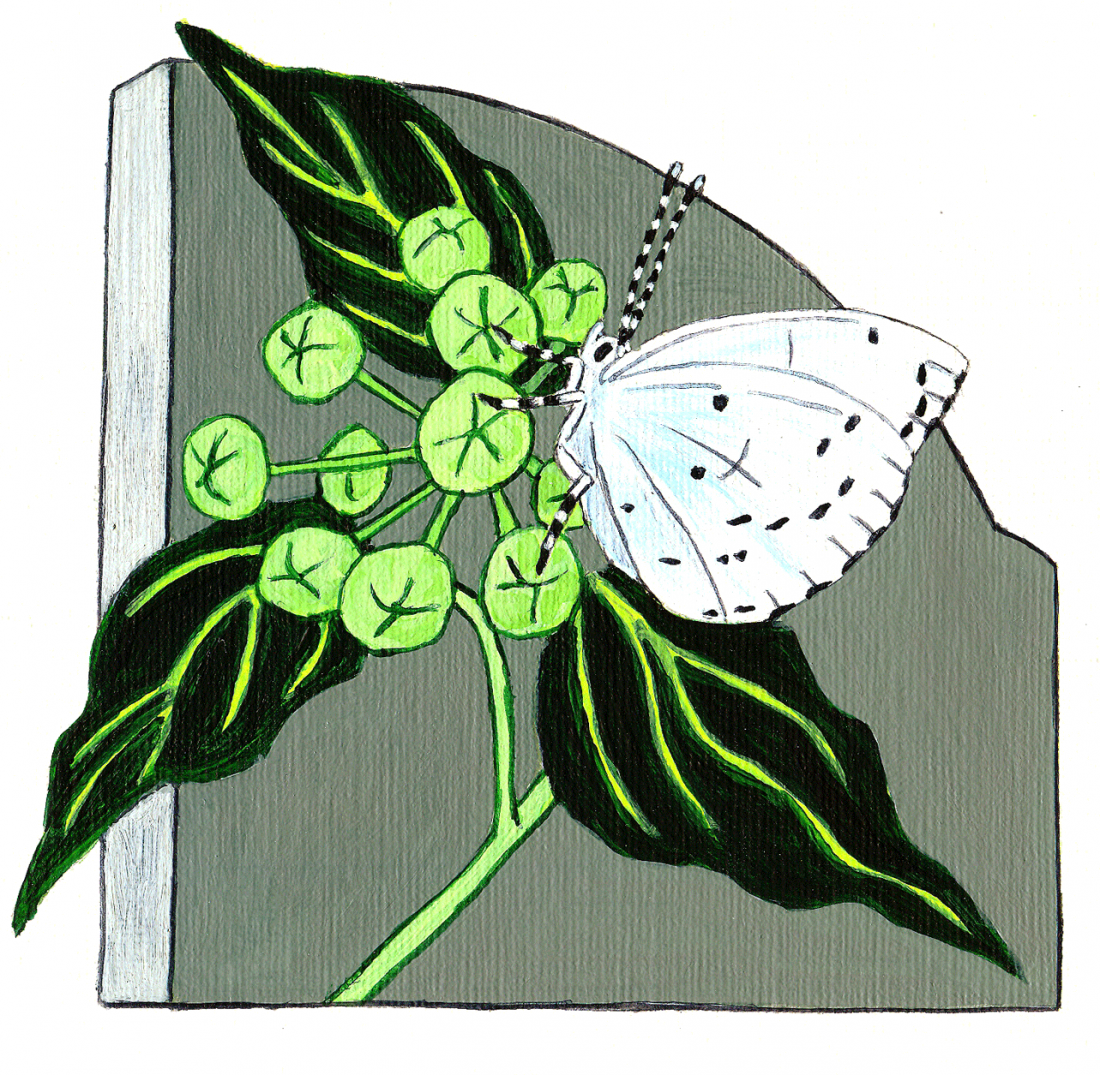Plants
“Churchyards and cemeteries are scenes not only calculated to improve the morals and the taste, and by their botanical riches to cultivate the intellect, but they serve as historical records.” John Claudius Loudon, 1843.
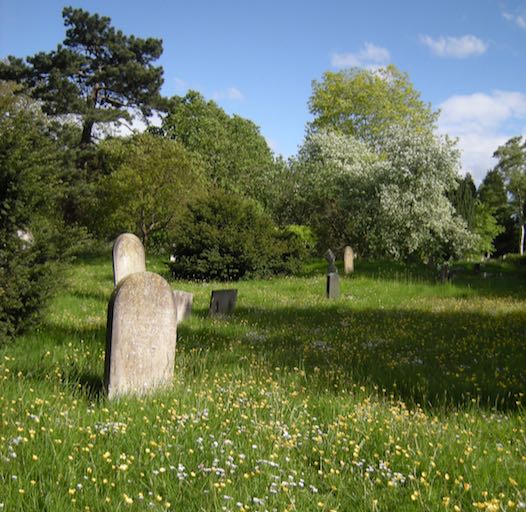 Earlham Cemetery covers 85 acres of land to the west of Norwich city centre.
Earlham Cemetery covers 85 acres of land to the west of Norwich city centre.
Nowadays Earlham Cemetery looks rather like parkland. There are tarred and gravel paths, but most of the Cemetery is covered in grass with wild flowers, with trees above.
Flowering starts in early spring with Snowdrops and Winter Aconites and these are followed by early Crocuses and Daffodils, along with the blossom of trees such as purple ‘Pisardii‘ plums.
In large parts of the Cemetery, the grass is mown short, but plants which form rosettes or grow low to the ground are able to survive and flower. These include species that are often found in garden lawns, such as Dandelions, Cat’s-ear and Daisies.
When the grass is allowed to grow a bit taller, a greater range of flowers can flower and, if cut at the right time, can form seeds. Meadow Saxifrage is able to thrive under these conditions, especially in the older and more shaded parts of the Cemetery. There are banks of Primroses in spring and patches of Green Alkanet, Germander Speedwell, Wild and Barren Strawberries, Comfrey and Red Deadnettles. All these plants provide food for insects, such as butterflies, hoverflies and early bees.
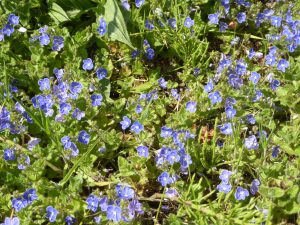
Germander Speedwell
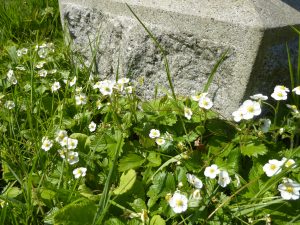
Wild Strawberry
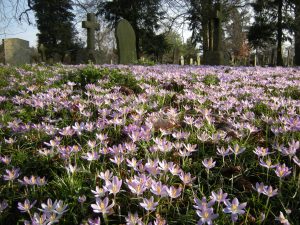
Early Crocuses
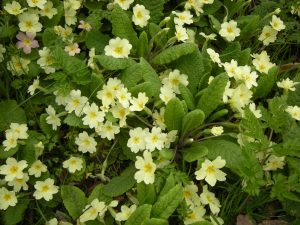
Primroses
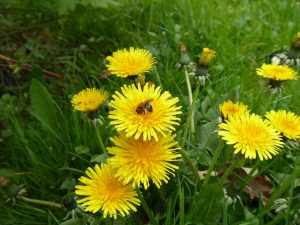
Dandelions with solitary bee
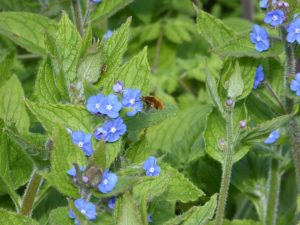
Bee-fly on Green Alkanet
Plants such as Canadian Goldenrod, Brambles and Ragwort sometimes grow on old graves and their flowers provide an important source of nectar and pollen for insects such as solitary bees in mid to late summer. Shrubs are important too, such as Cherry Laurel, Goat Willow, Euonymous and Box. Buddleia attracts butterflies and Ivy, a climber that flowers at the very end of summer, provides a meal for bees, butterflies and hoverflies, as well as a place for birds to nest and insects to hibernate.
Some of the oldest parts of the Cemetery are only cut occasionally and here taller plants can flower and set seed. In shadier areas, Cow Parsley makes a pretty show in late spring, followed by Hogweed. In sunnier areas, plants such as Lesser Knapweed, Field Scabious and several species of buttercups provide a show from late spring to late summer. All these flowers provide food for many insects.
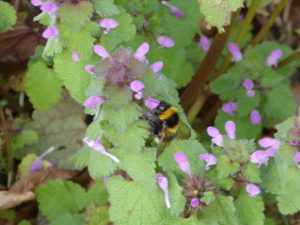
Bumblebee on Red Deadnettle
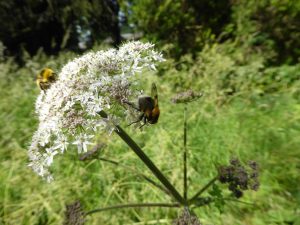
Hogweed – a great source of food for insects
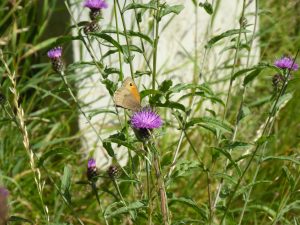
Meadow Brown butterfly on Lesser Knapweed
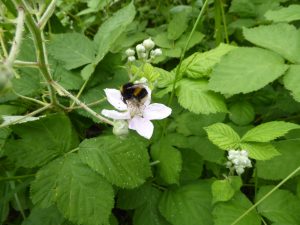
Bumblebee on Bramble flower
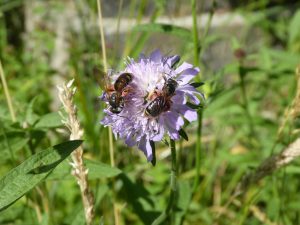
Field Scabious with Large Scabious Mining Bees
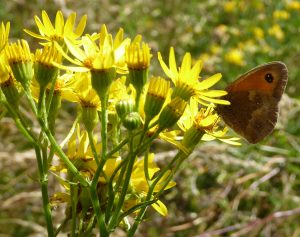
Gatekeeper butterfly on Ragwort
Earlham Cemetery holds a fine collection of trees and we have recorded at least eighty different species, including some large specimen trees and many unusual and exotic varieties. Trees provide nesting sites for birds and insects and many fungi are associated with their roots, helping the trees to take up more water and nutrients from the soil. In exchange the trees supply the fungi with sugars which it has made in its leaves by photosynthesis.
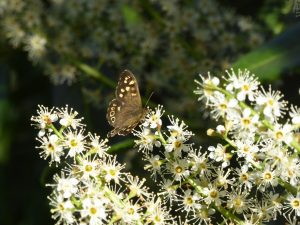
Speckled Wood butterfly on Cherry Laurel
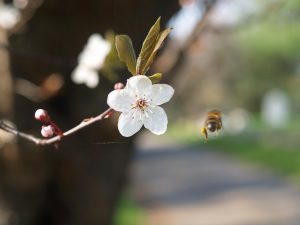
‘Pisardii’ plums – early blossom for bees
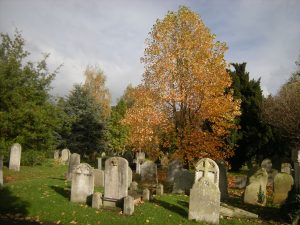
Tulip Tree in autumn
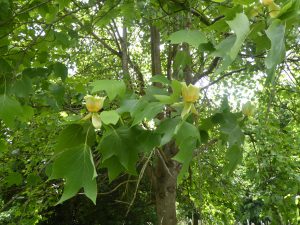
Tulip Tree in flower
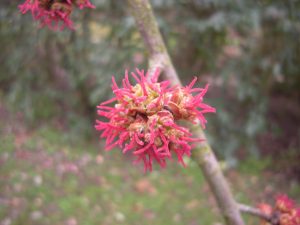
Persian Ironwood flowers
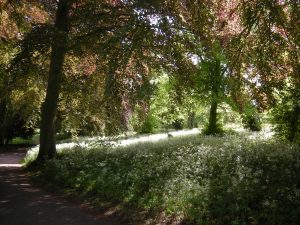
Copper Beeches, with Cow Parsley
Headstones and branches and trunks of trees are also home to mosses and liverworts and lichens.
Plants found in Earlham Cemetery
Trees Mosses and Liverworts List Other Plants
Bryophytes (Mosses and Liverworts) Gallery
Lichens
Lichens (these are dual organisms – part fungus, part alga or blue-green alga)
